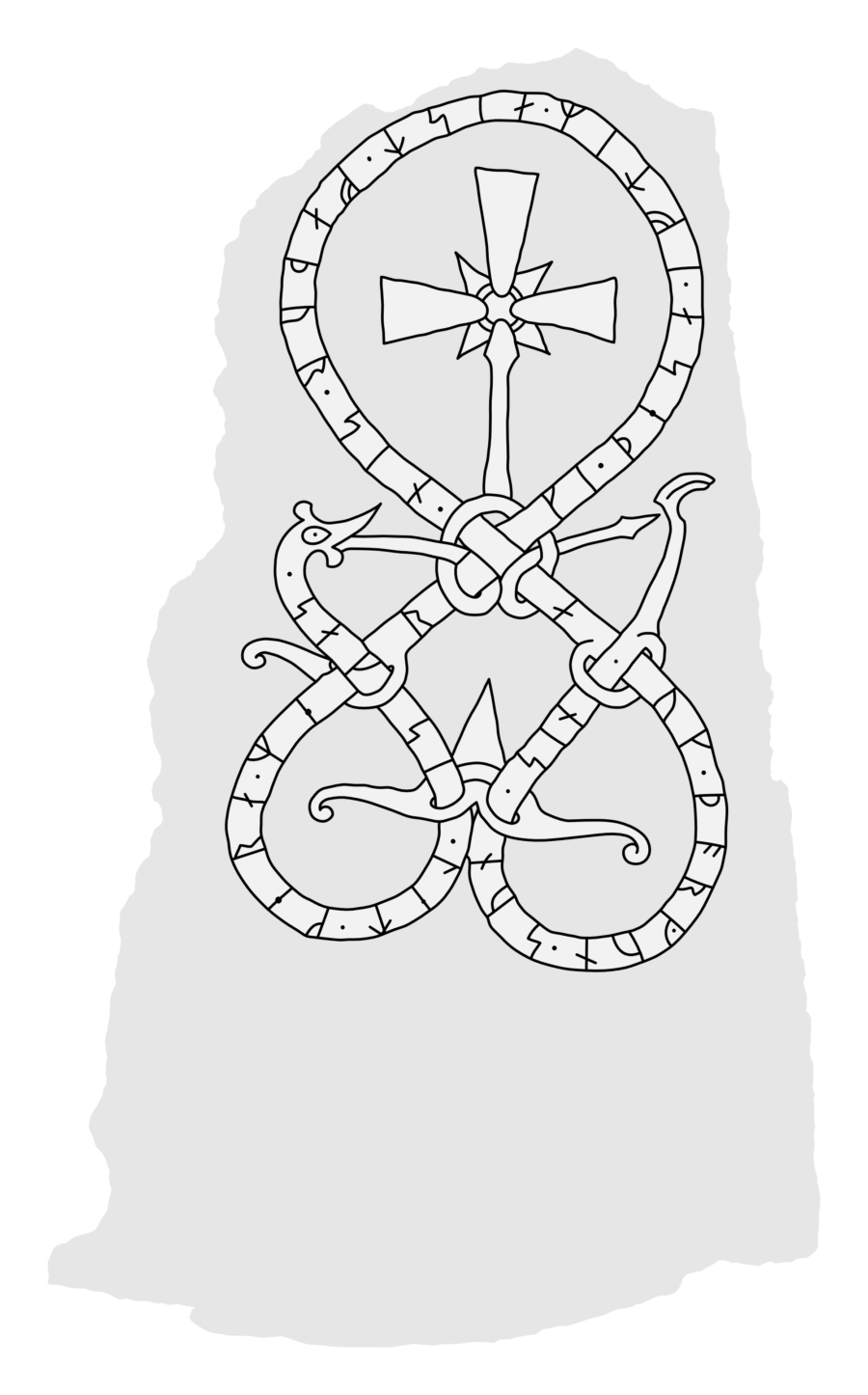
Runestone U 459
August 22, 2019
The carvings of the stone are in the runestone style Pr 2 (c. 1020-1050) pertaining to the Ringerike style.
The inscription is not signed.
The granite stone is c. 2,70 m tall and 1,66 m wide (at the bottom).
Runic inscription
The rune text starts at the head end of the animal.
Runes
᛫ ᛋᛅᚴᛋᛁ ᛫ ᛚᛂᛏ ᛫ ᚴᛂᚱᛅ ᛫ ᛘᛂᚱᚴᛁ ᛫ ᚦᛂᛋᛅ ᛫ ᛁᚠᛏᛁᛦ ᛫ ᛅᛁᛋᛏ ᛫ ᚠᛅᚦᚢᚱ ᛫ ᛋᛁᚾ ᛫ ᛅᚢᚴ ᛫ ᚦᚭᚱᚵᚢᚾ ᛫ ᛋᚢᚾ ᛫ ᛋᛁᚾ ᛫
Transliteration
* saksi * let * kera * merki * þesa * iftiʀ * aist * faþur * sin * auk * þorgun * sun * sin *
Old Norse
Saxi let gæra mærki þessa æftiR Æist, faður sinn, ok Þorgunn [æftiR] sun sinn.
English
Saxi had these landmarks made in memory of Eistr, his father; and Thorgunnr in memory of her son.
Notes
U 459 is probably one of several stones raised by members of the same family over the span of 25-30 years judging from the names and family relations described on the stones. They are, chronologically ordered from oldest to youngest, as follows:
U 457 was raised by Svarthǫfði in memory of his son Ônund.
U 458 was raised by Eistr in memory of his father Svarthǫfði.
U 459 was raised in memory of Eistr by his son Saxi and his mother Thorgunnr.
U 461 was also raised in memory of Eistr by his sons Fastulfr, Œringr, Geirr, his daughter Holmlaug and his wife Fastlaug.
If the assumptions about the connections between these inscriptions are correct, then Eistr must have owned both Skråmsta and Thorslunda. Skråmsta was his paternal farm, which was previously owned by his father Svarthǫfði and where his mother Thorgunnr and his son Saxi now lived after his death. He must have acquired the Thorslunda farm through his marriage with Fastlaug, where she now lived together with his other children after his death.
———
Skråmsta, Uppland, Sweden
U 459